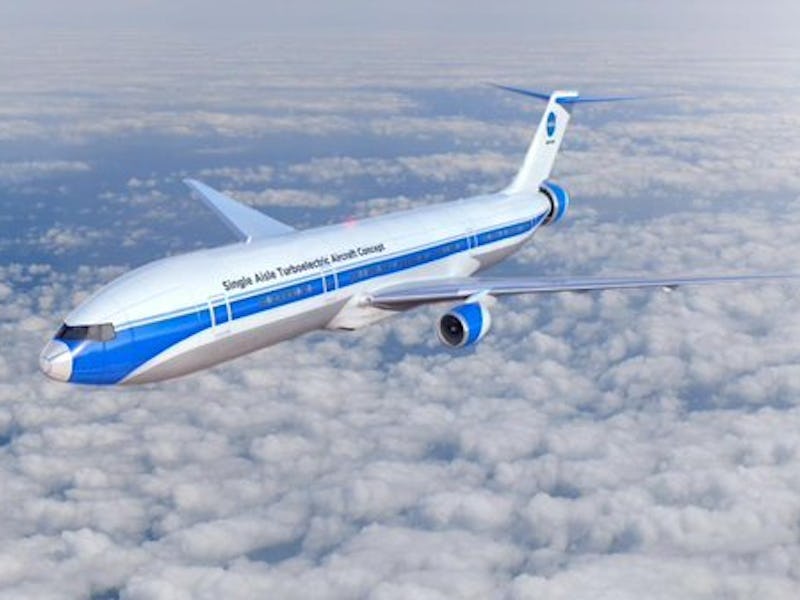NASA Plans to Fly Big Jets With Electricity
The space agency is hard at work on putting planes in the air by way of the volt.

NASA announced Tuesday its aeronautical engineers are working on how to reconfigure and update planes to fly by electrical power.
Trains, boats, and cars “currently” (no pun intended) see improved fuel efficiency by way of hybrid or turboelectric power — but can large commercial planes benefit from similar energy sources?
The scientists and engineers of NASA’s Glenn Research Center in Cleveland, Ohio are looking into such innovation, with an engaged effort toward incorporating low-carbon propulsion tech into aircraft design.
Planes have always counted on carbon-based fuels for power, like kerosene or gasoline. NASA however, has eyes on a prize that would use electricity to push jumbo jets instead—a game plan that would also cut down emissions, noise, and overall energy consumption—by designing generators, motors, and integrated electrical system configurations efficient enough to generate the amount of voltage required to give a plane proper thrust.
“These systems use electric motors and generators that work together with turbine engines to distribute power throughout the aircraft in order to reduce drag for a given amount of fuel burned,” says NASA engineer Amy Jankovsky, “Part of our research is developing the lightweight machinery and electrical systems that will be required to make these systems possible.”
Glenn engineers are also working on upgrading the makeup of components—looking at what is used for insulation and conduction—as well as improving on the sort of magnetic materials and semiconductors used to make future motors more efficient.
“Aircraft are highly complex machines,” says NASA’s Jim Heidmann, the manager for the space agency’s Advanced Air Transport Technology project, “Moving toward alternative systems requires creating new aircraft designs as well as propulsion systems that integrate battery technologies and electromagnetic machines like motors and generators with more efficient engines.”